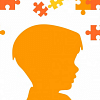Genetically modified monkeys may help autism research

First genetically modified monkeys with autism have been created in China, say the scientists.
They used genetic engineering to create monkeys with a version of autism and they will now try to cure them. But this raises thorny practical and ethical questions over how useful such animal models will be, reports MIT Technology Review.
Neuroscientist Zilong Qiu of the Shanghai Institutes for Biological Sciences says his team has been able to generate more than a dozen monkeys with a genetic error that in human children causes a rare syndrome whose symptoms include mental retardation and autistic features, such as repetitive speech and restricted interests.
Autism refers to any of a spectrum of intellectual and behavioral disorders whose genetic underpinnings are starting to be unraveled. It is identified in about one in 68 children in the US.
The above mentioned monkeys displayed shared psychiatric symptoms, including pacing in circles and interacting less with other monkeys, says MIT Technology Review in their report. They become stressed more easily than the other monkeys when researchers stared them in the eyes. The monkeys would "grunt, coo, and scream" more often if challenged in this way, according to Qiu's team, and two became "severely sick" in ways that "echoed" the problems human children with the gene defect.
"The monkeys show very similar behavior [to] human autism patients," Qiu said during a conference call organized by Nature, the journal that published the report today. "We think it provides a very unique model." reports MIT Technology Review quoting Journal.
Years of studies with mice suffering from autism-like disorders have provided disappointingly few leads on how to solve the problem in people. But mice have very different brains from human beings. For instance, they lack a prefrontal cortex, the brain area where some human psychiatric disorders seem to be centered.
Qiu says that's the reason his institute chose to create autistic monkeys. He says scientists would now be able to study what brain networks had been disrupted, as well as try out treatments, such as deep-brain stimulation. Qiu says his group would also attempt to reverse the symptoms it created by erasing the genetic error in live animals. That could be done using new genome-editing technologies, such as CRISPR, he says, reports MIT Technology Review quoting the Nature.
Qiu's report appears to be the first time that researchers have generated enough animals to observe stereotypical behavioral changes, says Afonso Silva, a scientist who works with transgenic monkeys at the National Institutes of Health.
When some scientists questioned whether the model developed in China was close enough to autism to really shed any light on human disease, Huda Zoghbi, whose lab at the Baylor College of Medicine discovered in 1999 that damage to the MECP2 gene causes Rett syndrome, a form of autism affecting girls, said, "I think we need to be cautious calling this a model … it does not quite accomplish that,".
Although the monkeys exhibited common behaviors, Zoghbi says these are not the same as those displayed in human children. More typical symptoms like seizures were absent, she said, while the monkeys' circling doesn't have an analog in humans. "For the sake of the field and the families it is important that we study models that are constructed to genetically mimic what happens in humans and that reproduce features of the syndrome as closely as possible," Zoghbi says, reports MIT Technology Review. "It is important that we hold [these] standards to nonhuman primate models." added Zoghbi.
The Shanghai team sought to copy a disorder that is closely related to Rett syndrome, in which a person is born with too many copies of the MECP2 gene. To do so, it used a virus to insert copies of the human gene into monkey eggs, just as they were fertilized. The eight monkeys ended up with between one and seven extra copies of the gene, says the report in MIT Technology Review.
Using any monkey in research, and especially creating ones with psychiatric disorders, is a charged subject that raises animal welfare questions. Even so, a small number of centres in China, Japan, and the US have recently redoubled efforts to create monkeys with human gene errors to see if they can cause psychiatric problems like versions of schizophrenia. Breeding monkeys is extraordinarily expensive and time-consuming, since they take two to four years to reach maturity, depending on the species, the MIT Technology Review says in its report.
John Spiro, deputy scientific director of the Simons Foundation Autism Research Initiative in New York, says he believes scientific leaders remain divided over how helpful primate models of autism will be. "There is a sentiment that you are never going to generate enough animals to be able to do the really important experiments," he says. "But a lot of people feel extraordinary strongly that rodents aren't good enough. I would say the smartest minds in the field say we have got to do this." reports MIT Technology Review quoting Spiro.

 For all latest news, follow The Daily Star's Google News channel.
For all latest news, follow The Daily Star's Google News channel. 








Comments